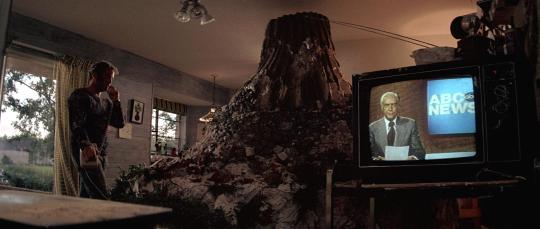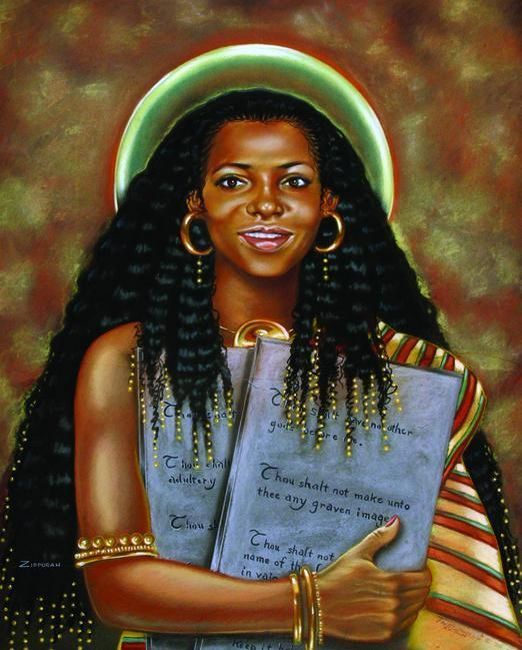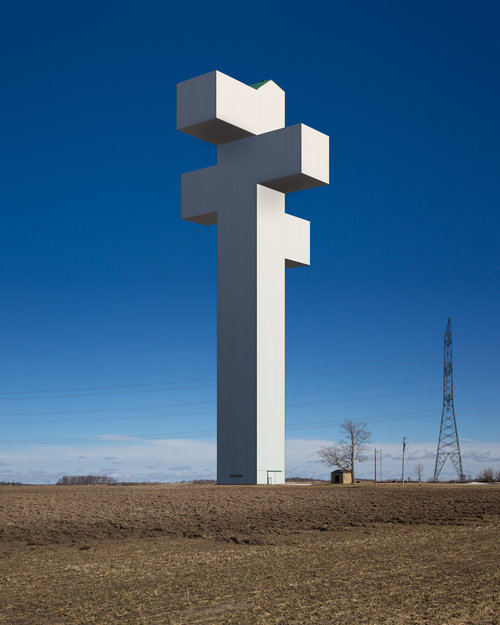#antistructure
Quote
The Quaker prophets of the Civil War period did perceive and value their community as a movement of antistructure, energized not by laws or fixed programs but by charismatic preaching and a theology of universal love.
Phyllis Mack, Visionary Women: Ecstatic Prophecy in Seventeenth-Century England
#quaker#quakerism#phyllis mack#prophet#prophecy#society of friends#community#love#charismatic#faith#antistructure
15 notes
·
View notes
Text
Facing Racism (Numbers 12:1-9)
Will we work toward creating a new liberated humanity, championing equity in all things for all people, instead of attempting to sanitize existing systems?
Moses and his wife Zipporah, by Flemish painter Jacob Jordaens, c.1650
When they were in Hazeroth, Miriam and Aaron criticized Moses on account of the Cushite woman whom he had married—for he had married a Cushite woman. They said, “Has the Lord spoken only through Moses? Hasn’t he also spoken through us?” The Lord heard it. Now the man Moses was humble, more so than anyone on…

View On WordPress
#aaron#antistructuralism#god&039;s anger#god&039;s judgment#god&039;s justice#individualism#miriam#moses#numbers#numbers 12#race#racialized society#racism#racist#spiritual life#systemic racism#zipporah
0 notes
Text

“Antistructure” - Animated painting
#happy halloween 23#animated painting#artgif#gif#computer graphics#experimental#experimental art#a structure#IN HELL#acrylic paint
85 notes
·
View notes
Text
Children of The Cryptocene, or The Tale of Jacomo Madici
Technofetishism as the economical manifestation of cognitive capitalism, and biased socialism.
Jacomo offers different scales to the city of Krakòw -- a global netarchical one, as a cloud antistructure hosting data of all the people who want to.
And a Borghesian dimension as a museal collection fueled by an irreprescible envy of having it all. As an ouroboros-like evolution of child to adult, and to grown-up child. A way of having fun in the Cryptocene, of being an embodied market, of networking ecosystems and freeing the acquiring of knowledge. Rooms of Childhoods as a curated venues to fit the polish bias.
A Reflective Pool of Life, as the most intense experience, where knowledge, forgetting and data gravitating around the world can come to close proximity of the users and visitors.
0 notes
Text
[FP OC] Xharl'i "Charley" Carnival
Full name: Xharl'i Carnival
Also Known As: Charley, Ms. Carnival, Mistress Carnival, the Hybrid, Yssgaroth scum, lesser being, xenos, alien, invader, weird thing, parasite, antistructural abomination
Pronouns: she/her
Species: cross-bred experiment (by the Great Houses or The Enemy) of a human and an Yssgaroth. How this Yssgaroth, or Yssgaroth-taint, was acquired is unknown
Homeworld: within the confines of the Doctor's timeship
This character is one of the protagonists of my planned fanfiction Echoes of the Homeworld. In this story she acts as the main doctor's companion, after being discovered pretty early-on within the confines of his own timeship.
She has fangs, black-brown wings, a FP/Mal'akh/Yssgaroth-style mask encased into her head, with her mouth and surrounding area free to allow the fangs to be displays. When not concentrating she jumps around her own timeline, which results in her rants being out of order as she jumping between points in time whilst ranting. Her clothes are also incredibly peculiar, changing their appearance based on the cultural conception of "weird"/the other in the onlookers eye, to disguise the primordial otherness of the yssgaroth.
It was unknown who created her, even to herself. She remembers growing up in the Doctor's timeship without any parents or friends, but cannot remember the beginning. Evidence suggests she was created by a version of the Great Houses far into their future, who are becoming the beginning of The Enemy (as that's what the identity was collapsed into in Echoes of the Homeworld).
1 note
·
View note
Text

Close Encounters of the Third Kind (1977) Directed by Steven Spielberg
#antistructure#trickster#ufo#close encounters#stevenspielberg#I feel he got it right when people get possessed by the high strangeness#lose family#lose social status#lose structure#lose job#marginalized#liminal
1 note
·
View note
Photo

Le antistrutture architettoniche di Alex Lysakowski
https://www.artwort.com/2020/09/09/fotografia/antistructure-alex-lysakowski/
0 notes
Photo

Alex Lysakowski - Antistructures
#Antistructures#alex lysakowski#Structures#art#contemporary#surreal#modern#truck#weird#photography#photo#fiction#reality#industrial#structural landscape
486 notes
·
View notes
Text
White Evangelical Tool Kit
Selection from White Too Long: The Legacy of White Supremacy in American Christianity by Robert P Jones (2020).
This part discusses how a theology of freewill individualism, relationalism, and antistructuralism for a cultural tool kit that white American evangelicals can use to restrict their moral vision from including a challenge white supremacy. [Continued here.]
Sin and Salvation Through a Personal Relationship with Jesus
It’s nothing short of astonishing that a religious tradition with this relentless emphasis on salvation and one so hyperattuned to personal sin can simultaneously maintain such blindness to social sins swirling about it, such as slavery and race-based segregation and bigotry. [...] This confounding contradiction points to the remarkable power of white Christian culture and the theology that undergirds it. As sociologist Ann Swidler has noted, all groups have what can be thought of as a kind of “cultural tool kit”: a repertoire of shared ideas and behaviors that allow them to organize and interpret reality.[45] This tool kit necessarily acts like a filter, allowing some things to come sharply into focus while blurring other things into an indistinguishable background field. Through the workings of this cultural filtering, some things seem like common sense, while others are less comprehendible or appear obviously nonsensical.
In a groundbreaking 2000 study, Michael Emerson and Christian Smith applied these insights to the results of thousands of quantitative and qualitative interviews with black and white Christians. Particularly on questions related to race, they found that white evangelicals’ cultural tool kit consisted of tools that restricted their moral vision to the personal and interpersonal realms, while screening out institutional or structural issues. Specifically, Emerson and Smith discovered that the white evangelical cultural tool kit contained three main tools that are all interconnected by theology: freewill individualism, relationalism, and antistructuralism.[46]
Spelled out, freewill individualism means that, for white evangelicals, “individuals exist independent of structures and institutions, have freewill, and are individually accountable for their own actions.”[47] Relationalism means that white evangelicals tend to see the root of all problems in poor relationships between individuals rather than in unfair laws or institutional behavior. Finally, antistructuralism denotes the deep suspicion with which white evangelicals view institutional explanations for social problems, principally because they believe invoking social structures shifts blame from where it belongs: with sinful individuals.[48]
Emerson and Smith summarized the blind spots this cultural tool kit creates for white evangelicals as follows: “Absent from their accounts is the idea that poor relationships might be shaped by social structures, such as laws, the ways institutions operate, or forms of segregation.… As carpenters are limited to building with the tools in their kits (hammers encourage the use of nails, drills encourage the use of screws), so white evangelicals are severely constrained by their religio-cultural tools.”[49] Moreover, the broader premillennialist theological context in which these individualistic conceptions of sin and salvation are embedded further reinforces this constriction of moral vision, both in terms of perceived problems and solutions.
Over the last two decades, there is increasing evidence that this cultural tool kit, developed primarily in the context of white evangelicalism, has become embedded across white Christianity more generally. In a follow-up study published a dozen years later, in 2012, for example, Emerson and coauthor Jason Shelton found stark differences between African American Protestants on the one hand and both white evangelical Protestants and white mainline Protestants—the latter group that historically embraced a more structuralist theology—on the other.[50] [...]
Given this divergent institutional history, however, we would expect larger differences between the evangelical and mainline expressions of white Christianity. Instead, we see that white Protestant affiliation generally is correlated with an individualist rather than structuralist cultural tool kit. In other words, the cultural tool kits of white mainline Protestants increasingly contain the individualist tools of their white evangelical cousins. Although Shelton and Emerson’s 2012 analysis was limited to Protestants, as I’ll demonstrate in chapter 5, more recent research from PRRI confirms these findings but also reveals that this cultural creep has now extended even into the theological world of white Catholics. Through the twin pathways of white racial identity and the increasing relevance of Republican partisanship in each of these groups, the freewill individualism of white evangelicals has been diffused throughout white American Christianity.
Finally, these cultural tools—freewill individualism, relationalism, and antistructuralism—coalesce powerfully in white evangelical Christology, which centers on having a personal relationship with Jesus. The personal Jesus paradigm represents, in compressed form, the entire conceptual model for white evangelicals’ individualist cultural tool kit.
Jesus is conceived of as a savior figure because he does what individual humans cannot: he reconciles human beings to God by sacrificing his life to atone for human sin. So, the only way to human salvation is through this connection between a person and Jesus. And this relationship is understood to have been initiated two millennia ago by Jesus through his death on the cross. Hence, the logic of the model begins with an invitation to a relationship already in motion, a point expressed in hundreds of hymns, such as this popular one: “I will sing the wondrous story / Of the Christ who died for me, / How He left His home in glory / For the cross of Calvary.”
In the personal Jesus paradigm, Jesus did not die for a cause or for humankind writ large but for each individual person.54 Responding positively to this invitation, entering into this relationship, is an intimate decision that must be made freely by each person as an accountable act of the will. In popular language, this act of human agency is articulated as answering a “knock at the door,” “letting Jesus come into your heart,” and as reciprocating a gift, such as “giving your life to Jesus.” Because the most fundamental religious act is one that takes place in the interiority of an individual’s emotional, psychological, and spiritual life, it naturally fuels an antistructuralist mind-set. There’s nothing in this conceptual model to provide a toehold for thinking about the way institutions or culture shape, promote, or limit human decisions or well-being.
And, notably, in the white evangelical conception of Jesus, though not often interrogated, Jesus is white, or, as in the late nineteenth-century racial classifications, an Aryan Caucasian.[55] There are no descriptions of Jesus’s physical characteristics in the gospels, and what we do know—that he was Jewish and from the Middle East—easily makes nonsense of any claims that Jesus shared with white American Christians a European heritage. But from the white European point of view, shot through with colonialist assumptions about racial hierarchies and white supremacy, there was no other possible conclusion. The story of human salvation had to find expression in a divinely ordained, hierarchical universe. As the exemplar of what it meant to be perfectly human, Jesus by definition had to be white. Whites simply couldn’t conceive of owing their salvation to a representative of what they considered an inferior race. And a nonwhite Jesus would render impossible the intimate relationalism necessary for the evangelical paradigm to function: no proper white Christian would let a brown man come into their hearts or submit themselves to be a disciple of a swarthy Semite. [...]
To be sure, this theological worldview has done great damage to those living outside the white Christian canopy. But what has been overlooked by most white Christian leaders is the damage this legacy has done to white Christians themselves. To put it succinctly, it has often put white Christians in the curious position of arguing that their religion and their God require them to aim lower than the highest human values of love, justice, equality, and compassion. As antebellum Presbyterian preacher Donald Frazer argued emphatically, many abolitionists had the shoe on the wrong foot by pretending to be “more humane than God.”[61] It was God’s law, not human conscience, that set the limits on the treatment of blacks by whites, he argued. Moral discomfort, even moral horror or outrage, has no place in this theological worldview. But surely it should give white Christians pause to continue to pledge allegiance to a theological system that contracts rather than expands our moral vision; that anesthetizes rather than livens up our moral sensitivities.
Note: I don't care for the reasoning that white supremacy damages white people by damaging their moral conscience/reputation, but I think the last point in the paragraph can be rhetorically and theologically useful.
13 notes
·
View notes
Photo

From Antistructures
Alex Lysakowski
131 notes
·
View notes
Photo








Antistructure
Mississauga-based photographer Alex Lysakowski creates images with surreal and strange structural interactions within ordinary landscapes. Alex avoids a transitional space between reality and fiction, while maintaining realism in the atmosphere of the image, "he says.
770 notes
·
View notes
Text
Numbers 12:1-9 – Against Racism
God is not okay with racism.


American artist Alan Jones depiction of Moses’ wife Zipporah
While they were at Hazeroth, Miriam and Aaron criticized Moses because he had married a Cushite woman. They said, “Has the Lord spoken only through Moses? Hasn’t he spoken through us, too?” But the Lord heard them. (Now Moses was very humble—more humble than any other person on earth.)
So immediately the Lord called to Moses, Aaron,…
View On WordPress
#aaron#antistructuralism#cush#equity#god&039;s anger#god&039;s justice#injustice#justice#miriam#moses#numbers#race#racism#racist#structuralism#systemic evil#systemic racism#systemic sin#zipporah
0 notes
Photo








Antistructure | Alex Lysakowski | Via
106 notes
·
View notes
Photo

(via ignant-art-alex-lysakowski-antistructure-15-720x900.jpg (720×900))
2 notes
·
View notes














